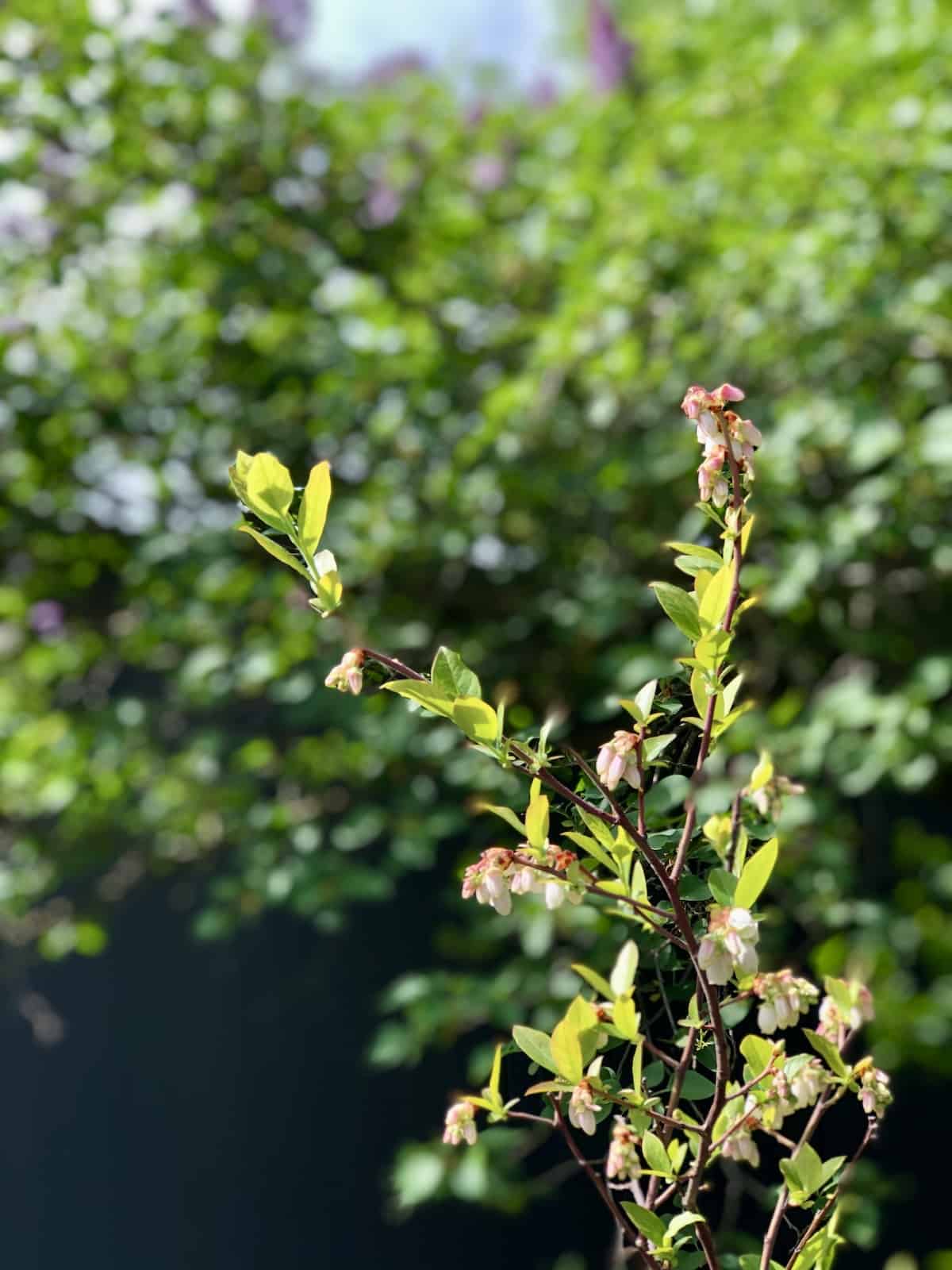The Ultimate Guide To Companion Planting For Blueberries
The Ultimate Guide to Companion Planting for Blueberries
Blueberries are a delicious and versatile fruit that can be enjoyed fresh, frozen, or cooked. They are also a relatively easy plant to grow, but there are a few things you can do to ensure that they thrive. One of the most important things is to choose the right companion plants.
Companion planting is the practice of planting different types of plants together that benefit each other. By planting companion plants with blueberries, you can improve their health, productivity, and pest resistance.
In this guide, we will discuss the best companion plants for blueberries, as well as some plants that you should avoid planting near them. We will also provide tips on how to properly plant and care for blueberry bushes.
Benefits of Companion Planting with Blueberries
There are many benefits to companion planting with blueberries. Some of the most important benefits include:
- Improved pollination: Blueberries are a self-pollinating plant, but they can produce more fruit if they are cross-pollinated. Companion plants that attract bees and other pollinators can help to improve pollination and fruit production.
- Reduced pest and disease problems: Some companion plants can help to repel pests and diseases that can damage blueberry bushes. For example, garlic and chives can help to repel Japanese beetles, while mint can help to repel spider mites.
- Improved soil health: Companion plants can help to improve the soil around blueberry bushes by adding nutrients, reducing erosion, and suppressing weeds.
- Increased aesthetic appeal: Companion plants can add beauty and interest to your blueberry patch. They can also help to create a more natural and wildlife-friendly environment.
What to Plant Near Blueberries
There are many different plants that can be grown as companion plants for blueberries. Some of the best options include:
- Azaleas and rhododendrons: These acid-loving plants are native to the same environments as blueberries and can help to improve the soil pH around the bushes.
- Clover: Clover is a nitrogen-fixing plant that can help to add nutrients to the soil. It can also help to suppress weeds and improve drainage.
- Evergreens: Evergreens can provide shade and shelter for blueberry bushes, especially during the hot summer months. They can also help to attract beneficial insects.
- Herbs: Many herbs, such as basil, thyme, and mint, can help to repel pests and diseases that can damage blueberry bushes. They can also add flavor to your blueberries when you cook them.
- Lilacs: Lilacs are a beautiful and fragrant flower that can be grown as a companion plant for blueberries. They can also help to attract pollinators.
- Strawberries: Strawberries and blueberries have similar growing requirements and can be planted together in a blueberry patch. They can also help to attract beneficial insects.
What Not to Plant Near Blueberries
There are a few plants that you should avoid planting near blueberries. These include:
- Tomatoes: Tomatoes and blueberries have different nutrient requirements and can compete with each other for nutrients in the soil.
- Acid-sensitive plants: Some plants, such as hydrangeas and roses, are sensitive to acidic soil. Avoid planting these plants near blueberries, as the acidic soil can damage their roots.
- Weeds: Weeds can compete with blueberry bushes for water, nutrients, and sunlight. Remove any weeds that grow near your blueberry bushes as soon as you see them.
How to Plant and Care for Blueberry Bushes
Blueberry bushes are relatively easy to plant and care for. Here are a few tips:
- Plant blueberry bushes in full sun. They need at least 6 hours of sunlight per day.
- Plant blueberry bushes in acidic soil with a pH of 4.5 to 5.5. If your soil is not acidic, you can add sulfur to the soil before planting.
- Space blueberry bushes 3 to 5 feet apart.
- Water blueberry bushes regularly, especially during the first year after planting.
- Mulch around blueberry bushes to help retain moisture and suppress weeds.
- Fertilize blueberry bushes in the spring with an acid-based fertilizer.
- Prune blueberry bushes in the winter to remove dead or diseased branches.
Conclusion
By following these tips, you can successfully grow healthy and productive blueberry bushes. Companion planting can help to improve the health, productivity, and pest resistance of your blueberry bushes. By choosing the right companion plants and planting them correctly, you can enjoy delicious blueberries for years to come.
Blueberries are a delicious and nutritious fruit that can be grown in many different climates. But did you know that there are certain plants that can actually help blueberries grow better? These are called companion plants, and they can provide a number of benefits to blueberries, such as:
- Improving soil quality
- Attracting pollinators
- Repelling pests
- Providing shade
If you're looking to grow the best possible blueberry bushes, then you should definitely consider planting some companion plants. There are many different companion plants that can work well with blueberries, but some of the best include:
- Rhododendrons and azaleas: These plants are in the same family as blueberries and have similar soil requirements. They also attract pollinators and help to suppress pests. Gardenia Inspiration has a great article on the best blueberry companion plants. They also have a lot of other helpful information on blueberry growing, so be sure to check them out!
FAQ of best blueberry companion plants
What are the best companion plants for blueberries?
Some of the best companion plants for blueberries include:
- Evergreens: Evergreens, such as spruce, pine, yew, fir, and juniper, can provide shade and shelter for blueberries from the hot afternoon sun. They also help to improve the soil acidity, which blueberries need to thrive.
- Flowering plants: Flowers that attract pollinators, such as daisies, lilacs, and azaleas, can help to improve the blueberry yield. They also add beauty and interest to the blueberry patch.
- Herbs: Herbs, such as thyme, basil, and oregano, can help to deter pests and diseases from blueberries. They also add flavor to blueberries when used in cooking.
- Groundcovers: Groundcovers, such as strawberries and creeping thyme, can help to suppress weeds and improve soil moisture. They also add color and interest to the blueberry patch.
What should I avoid planting near blueberries?
There are a few types of plants that you should avoid planting near blueberries, including:
- Nightshades: Nightshades, such as tomatoes, peppers, and potatoes, can compete with blueberries for nutrients and water. They can also harbor pests and diseases that can damage blueberries.
- Brassicas: Brassicas, such as kale, cabbage, brussels sprouts, and cauliflower, can also compete with blueberries for nutrients and water. They can also harbor pests and diseases that can damage blueberries.
- Melons: Melons can stunt the growth of blueberries and make them more susceptible to pests and diseases.
- Salad greens: Salad greens, such as lettuce, can compete with blueberries for nutrients and water. They can also harbor pests and diseases that can damage blueberries.
When is the best time to plant blueberries?
The best time to plant blueberries is in the spring, when the soil has warmed up but before the plants have started to grow. If you live in a warm climate, you may also be able to plant blueberries in the fall.
How far apart should blueberry bushes be planted?
Blueberry bushes should be planted at least 3 feet apart. This will give them enough space to grow and spread out. If you are planting a row of blueberry bushes, make sure to leave at least 6 feet between rows.
How do I care for blueberry bushes?
Blueberry bushes need full sun and well-drained soil. They should be watered regularly, especially during the first year after planting. Blueberry bushes also need to be fertilized every spring with an acid fertilizer.
Image of best blueberry companion plants
5 different images of "best blueberry companion plants" from Pinterest:
- Astilbe is a shade-loving plant that can help to suppress weeds and improve the soil drainage around blueberries.

- Coneflower is another shade-loving plant that can attract beneficial insects to the blueberry patch.

- Daylily is a sun-loving plant that can help to attract pollinators to blueberries.

- Lavender is a drought-tolerant plant that can help to improve the soil quality around blueberries.

- Sweet woodruff is a groundcover plant that can help to suppress weeds and improve the air circulation around blueberries.

Post a Comment for "The Ultimate Guide To Companion Planting For Blueberries"